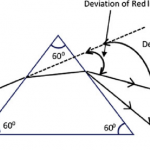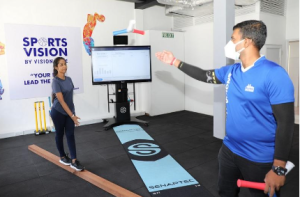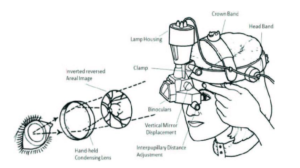The Van Herrick technique is a quick and
easy way to estimate anterior chamber
depth, which allows grading of patients
according to the likelihood of having
primary acute closed-angle glaucoma.
However, as the test is highly subjective,
measurements and thus grading may vary
between observers.
The Van Herrick technique is an eye
examination method used to determine the
size of the anterior chamber angle of the
eye.
Glaucoma is currently the principal cause of
irreversible blindness in the world.
Therefore, The Van Herick technique is
pertinent to the interests of all eye care
practitioners as it permits for a quick and
simple screening alternative to the
conventional Gonioscopy examination. It
should not however, be used as a
replacement for the gonioscopy
examination but rather be used as a means
of refuting or confirming the results of a
gonioscopy examination.
The Van Herrick technique has become the
most commonly used qualitative method of
assessing the size of the anterior chamber
angle (ACA). Whereby, it involves
comparing the depth of the peripheral
anterior chamber to the thickness of the
cornea, when a narrow beam is shone
within the limbus at a 60°angle. The
anterior chamber drainage angle is then
graded as a ratio between the peripheral
anterior chamber depth and corneal
thickness (AC : C ratio) or expressed
traditionally as a fraction to provide the Van
Herrick’s result. Grading can also be
obtained by distinguishing the structures
visible upon observation. Each visible
structure correlates to a Van Herrick grade
which can then be expressed a fraction.
Method:
The technique was initially designed by Van
Herrick, performed with the utilization of a
slit lamp without the requirement of any
additional aids. It facilitates a simple and
quick assessment of the lateral chamber
angle. The method involves a narrow slit of
light from a slit lamp being projected onto
the peripheral cornea at an angle of 60⁰ as
near as possible to the limbus. The resulting
image is a slit that is projected onto the
surface of the cornea, the width is then
used as a reference for the grading of the
angle. The width of the angle is graded by
the distance between the corneal slit image
and the slit image on the iris.
Interpretation:
Conclusion:
The Van Herrick method is used for the
estimation of the chamber angle used in a slit
lamp examination does not require appreciable
time. Moreover, the performance of this test
does not represent additional stress to the
patient. Thus, the Van Herrick test is a method
that is very well suitable for the quick and easy
assessment of the chamber angle.







